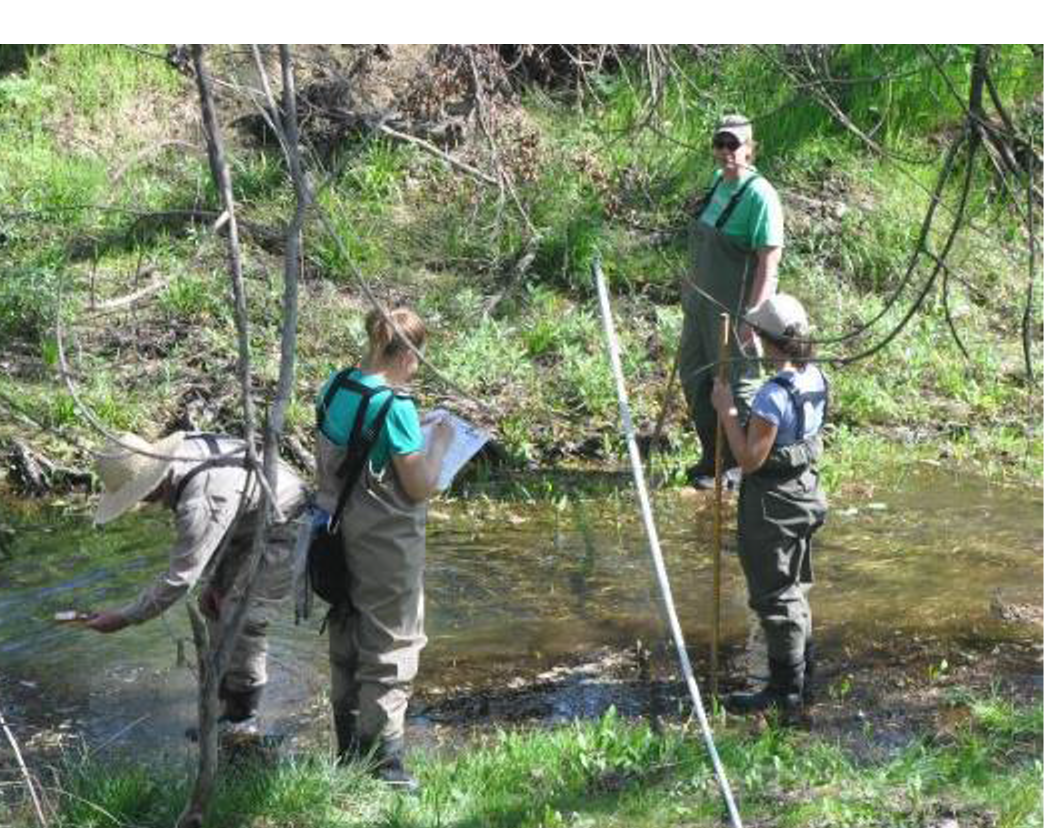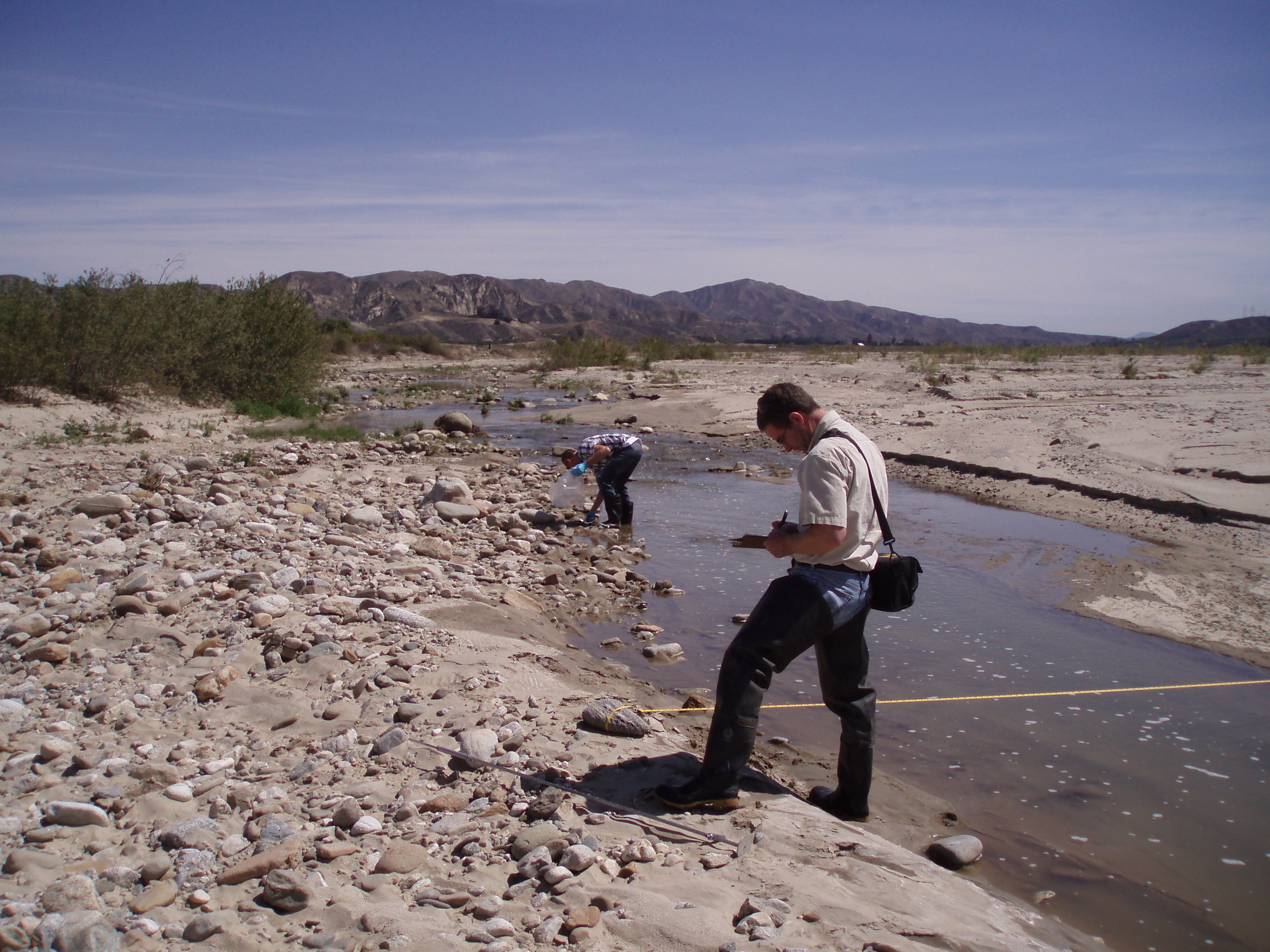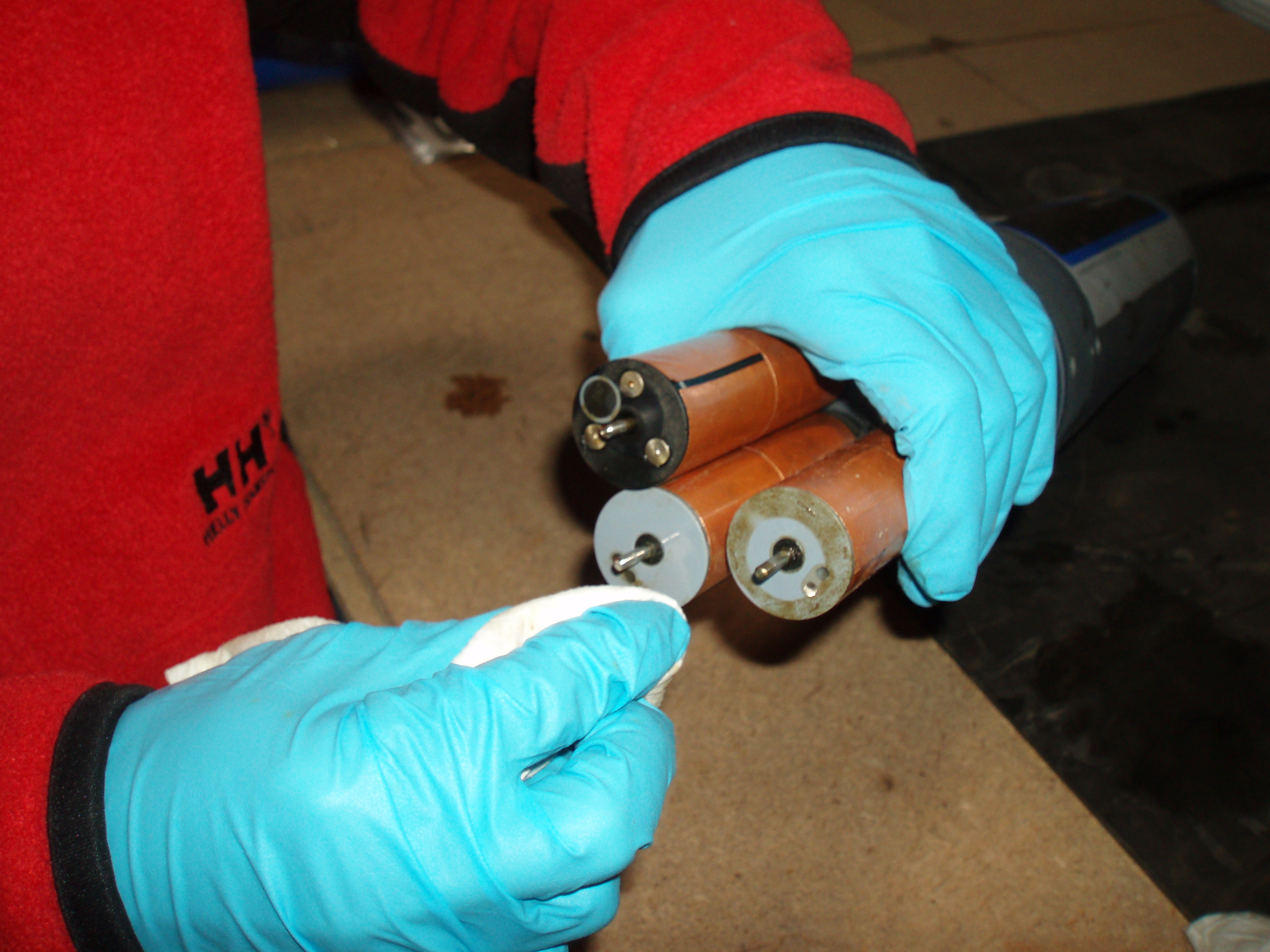
Biological Assessment (Bioassessment)
Bioassessments evaluate the overall health of a waterbody by comparing different factors at a site with what would be expected to be found at “reference” site, i.e. a site unimpacted by humans. Aquatic bugs and algae are collected and identified, and measurements of habitat quality, water level, and water chemistry are taken. In unhealthy ecosystems, the diversity of animals and plants often decreases and the composition of species changes, favoring those organisms that are more tolerant of poor environmental conditions. The information can be used to determine impacts of pollutants and non-chemical stressors (e.g. sediment and habitat alteration), and help prioritize management activities.
The Program has participated in the Southern California Stormwater Monitoring Coalition’s Regional Bioassessment Survey since 2009. The latest five-year study began in 2021 and, like previous studies (2009-2013, 2014, 2015-2020), is looking at the condition of streams in Southern California, what stressors are associated with poor condition, and whether the conditions are changing over time. The studies include sites from a list of randomly generated coordinates along Ventura County waterways (probabilistic sites) and former probabilistic sites that are visited repeatedly to look for trends (trend sites). Qualifying sites must be wadeable, accessible, safe, have water present at the time of sampling, and have landowner permission to access.
The Program samples a mixture of trend and probabilistic sites for a total of approximately 18 sites each year, spread across four watersheds (Ventura River, Calleguas Creek, Santa Clara River, and Santa Monica Bay). More details are available in the 2021-2025 workplan, previous workplans, study reports, and in the Bioassessment section of the Program’s Annual Reports.

Pyrethroids (2012, 2015, 2018, 2021)
Pyrethroids are a class of insecticides, many of which have been newly developed, to replace pesticides that were banned due to long lasting environmental harm. The Program conducted pyrethroid monitoring studies in 2012, 2015, 2018, and 2021. The studies involved the collection of sediment from two locations in the Ventura River, Santa Clara River, and Calleguas Creek* watersheds. All samples were analyzed for pyrethroids, total organic carbon, and toxicity. Some pyrethroids were detected but were typically at concentrations below those expected to cause toxicity. Sediment toxicity attributed to pyrethroids was not seen at any of the monitored sites, with the exception of one site non-Program* site in 2012 in an agricultural area.
*Monitoring of sediments for pyrethroids is already conducted in the Calleguas Creek Watershed as part of the watershed’s Toxicity Total Maximum Daily Load (TMDL) monitoring program and so this data was used for the 2012 study to avoid duplication of effort, however the Program substituted their own sites in the Calleguas Creek Watershed starting in 2015 in order to simplify data collection and analysis, and increase comparability as the turnaround time for the TMDL study data did not align with the Program’s study.
The 2012, 2015, 2018, and 2021 reports are available.
Aluminum
Aluminum concentrations in Ventura County surface waters and urban runoff during wet weather events are routinely above the water quality objective (WQO) specified in the Los Angeles Region Water Quality Control Plan (Basin Plan). The objective is based on the level required for drinking water. As aluminum occurs naturally in soils and sediments and is the most abundant metal in the earth’s crust it is suspected that naturally occurring aluminum is the primary source, and sampling was designed to confirm this hypothesis. The Program conducted a historical data evaluation and initiated new monitoring during the 2013/14 monitoring season.
All wet weather samples collected upstream of anthropogenic activities exceeded the WQO and the aluminum levels were routinely much higher than those seen in runoff from urban areas. The exceedingly high level of total aluminum detected in runoff from undeveloped areas suggests that wet weather aluminum will routinely exceed water quality objectives regardless of Permittee efforts. In comparison, concentrations of total aluminum in dry weather samples appear to be a much smaller issue, with approximately six percent of samples exceeding the WQO. Read the full report here.

Southern California Bight Project (Bight)
The Program participates in the Southern California Bight Project which is conducted in five year periods. The Program assists with the estuary and nearshore sampling effort requirements for Ventura County as defined in the Bight Workplans. For the Bight 2008 Coastal Wetlands and Estuaries Eutrophication Assessment Workplan, the Program maintained two continuous data loggers (dissolved oxygen, pH, salinity, turbidity, chlorophyll a fluorescence, and temperature) in the Santa Clara River Estuary from December 2008 through December 2009 and collected wet and dry weather mass emission station water samples for nutrient analysis during the 2008/09 monitoring season.
For Bight 2013, the Program participated in the microbiology component to help assess the extent of human fecal contamination from coastal drainages to the ocean. From October 2013 through June 2015, the Program collected water samples from the Ventura River, Santa Clara River, and Calleguas Creek during wet and dry weather, and the Ormond Lagoon Waterway (formerly known as Oxnard Industrial Drain) during dry weather. The samples were analyzed for the HF183 human-associated DNA fecal marker. The marker results will help gauge the presence of human fecal material in each sample and the percentage of samples positive for human fecal material will then be used to assess the extent of human fecal contamination at each site and across the region.
The Program is participating in the microbiology study element of Bight 2018 to research better methods of determining health risk to swimmers, which in turn could result in fewer unnecessary beach closings. The microbiology study is testing a new Environmental Protection Agency method (EPA Method 1642) for enumerating male-specific and somatic coliphages (bacterial virus) in recreational waters at Southern California beaches. Coliphage measured by EPA Method 1642 has been proposed by the EPA for use as a new beach water quality indicator. The Program is collaborating with the Southern California Coastal Water Research Project (SCCWRP), California State University Channel Islands (CSUCI), and the Ventura County Environmental Health Division (VCEHD) for sample collection, testing, and analysis of samples from Surfer’s Point at Seaside and Surfer’s Knoll Beach. The study proposes to answer three questions: (1) Is Method 1642 performance consistent across Southern California beaches? (2) How do measurements of Enterococcus compare to those of somatic and male-specific coliphages in beach water? (3) Is there a seasonal difference in magnitude and frequency of somatic and male-specific coliphages in beach water between wet and dry weather?
Bight 2018 sample testing was been slower than projected due to COVID-19 impacts but the sampling is completed and reporting is underway. Updates are available in the SoCal Bight section of the Program’s Annual Reports. Information and reports for all Bight years are available here.
![]()
Bacteria Source Markers
The Program initiated a study in 2014 to identify the host species contributing bacteria to the municipal separate storm sewer systems (MS4s) and receiving waters. The study looked for genetic markers that can indicate the type of animal the bacteria came from, e.g. humans, birds, dogs, horses, or cattle. An initial report on the findings was produced in 2015.
